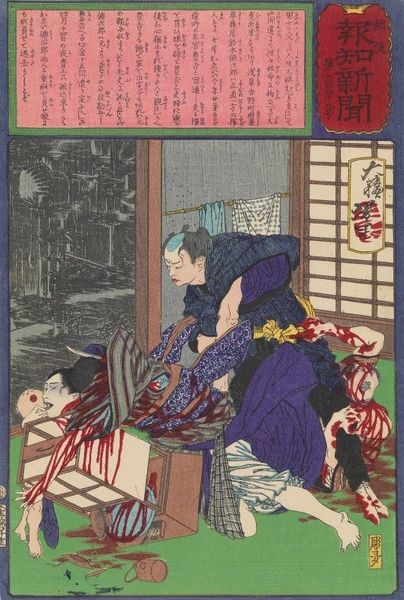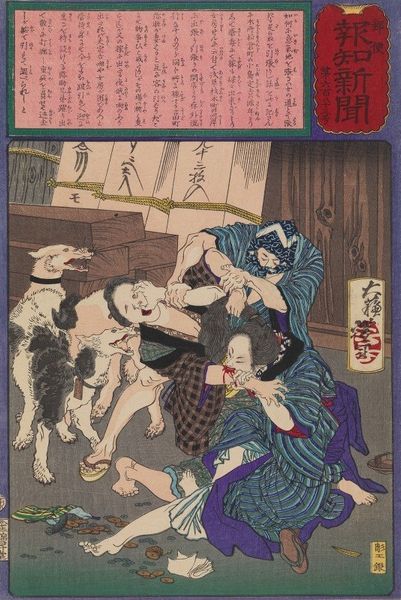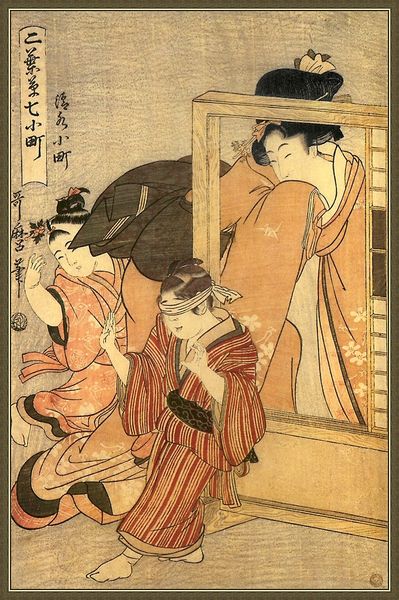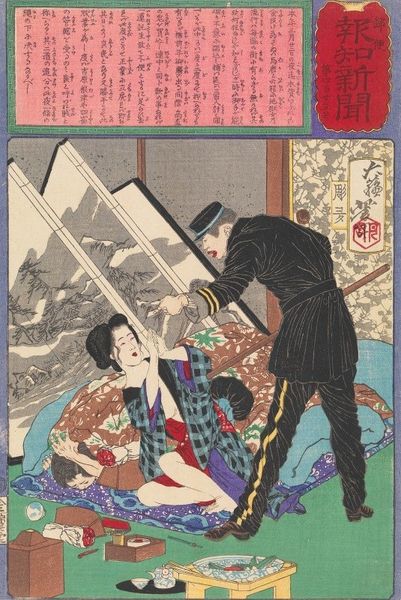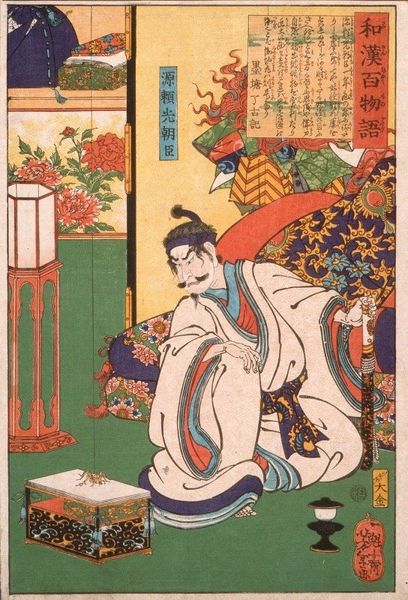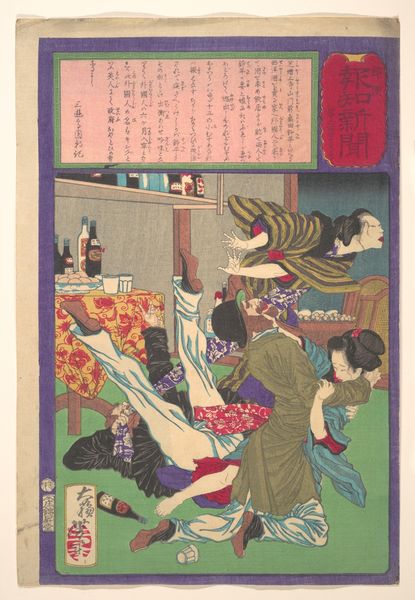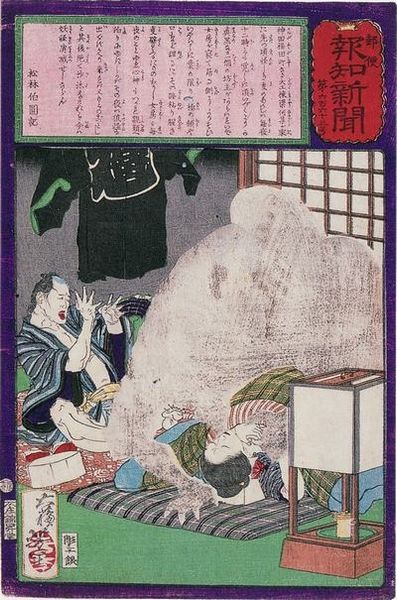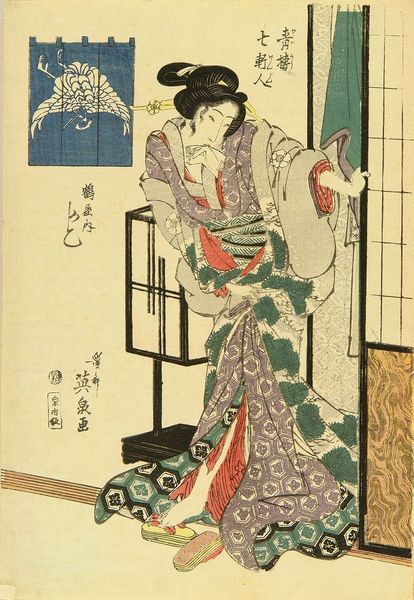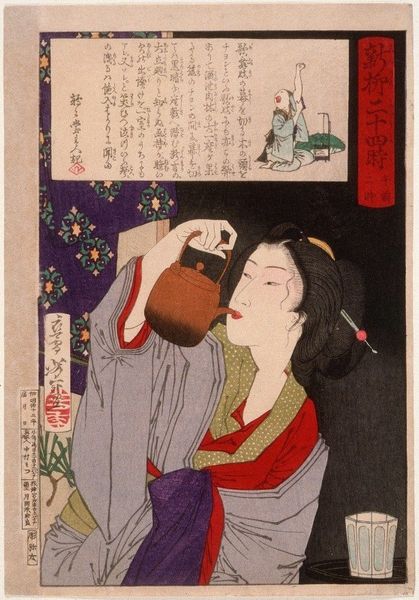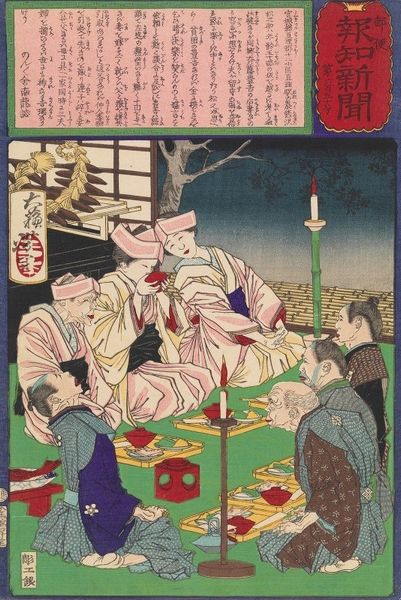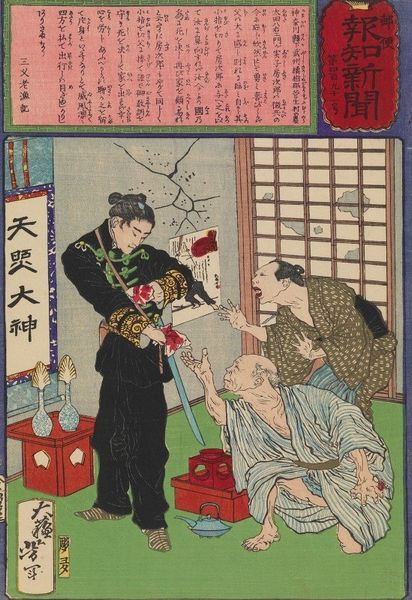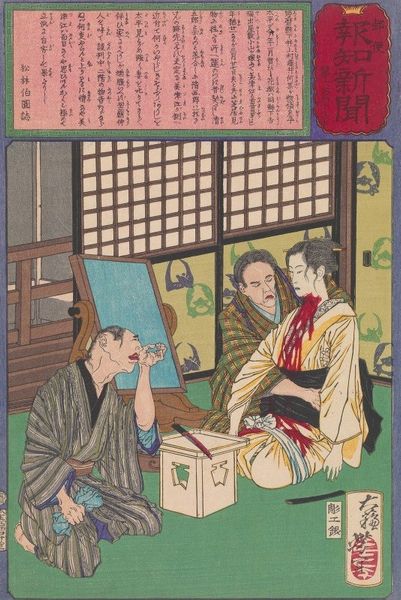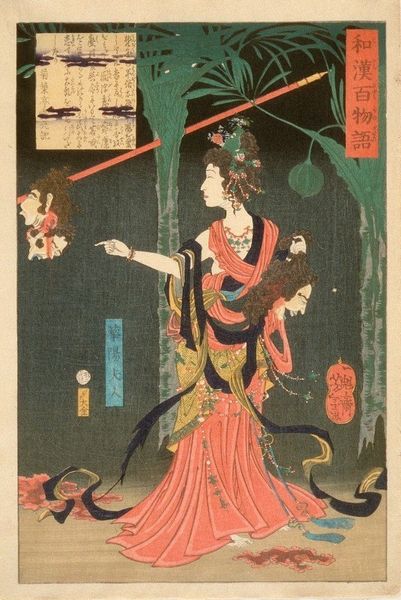
Copyright: Public Domain: Artvee
Curator: This woodblock print by Tsukioka Yoshitoshi, created around 1875, is titled "Black Monster Attacking a Carpenter’s Wife in Kanda." It's a startling image, isn't it? Editor: It is, quite theatrical even. The monster's form is fascinating—almost amorphous—while the lantern to the right grounds the scene. Curator: The title refers to an incident that appeared in the Tokyo Nichinichi Shimbun newspaper. Yoshitoshi uses the woodblock print medium here not only to recount this sensational story but to investigate societal anxieties and superstitions of the time. Consider the vulnerable pose of the wife; she embodies the helplessness of women facing societal or supernatural threats. Editor: The use of contrasting textures really draws my eye. Look at the geometric precision of the floor matting versus the swirling, cloud-like rendering of the monster's form, punctuated by sharp claw-like extensions reaching out to seize their victim. And is that a garment hanging on the back wall, behind the man, creating further dramatic shadows and patterns? Curator: Exactly! And let’s examine the male figure; the husband cowering back. His pose, his gestures of utter terror – these are intentionally gendered tropes meant to provoke reactions about perceived weakness or helplessness in protecting one's own family. Yoshitoshi’s narrative delves into ideas of masculine responsibility. The newspaper included textual context to all of this which gave agency and nuance, versus the way an image only does. Editor: While it’s essential to explore those underlying social messages, one cannot ignore how brilliantly Yoshitoshi uses composition and line to heighten tension here. The stark whites and blacks are strategically placed to direct the eye from one point of horror to another; they draw you right into the chaos! Semiotically, the darkness could easily be representative of not just fear, but uncertainty. Curator: Agreed. Looking at "Black Monster Attacking a Carpenter's Wife in Kanda," we gain insight not only into an important socio-historical context but an incredibly powerful example of ukiyo-e from that moment in time. Editor: A great instance of dynamic design and cultural observation intertwined; the composition and symbolic deployment of material contribute an extra element to the incident recounted here, beyond pure representation.
Comments
No comments
Be the first to comment and join the conversation on the ultimate creative platform.
